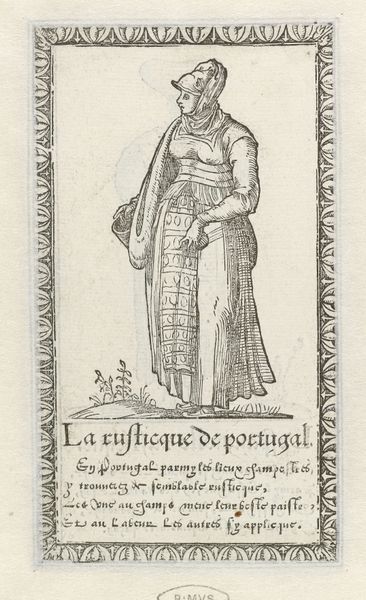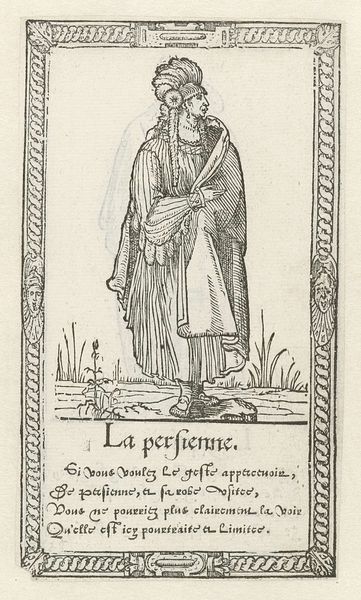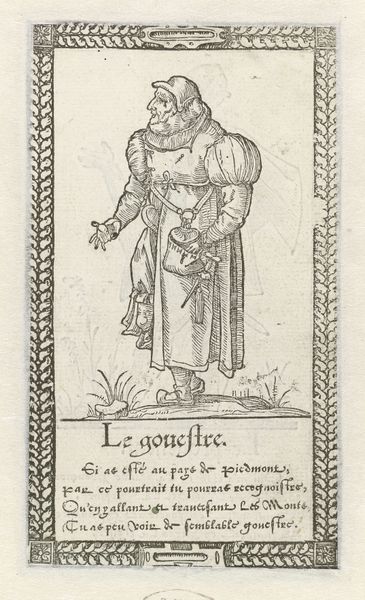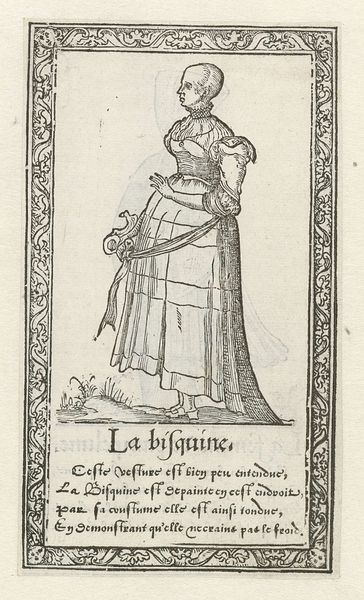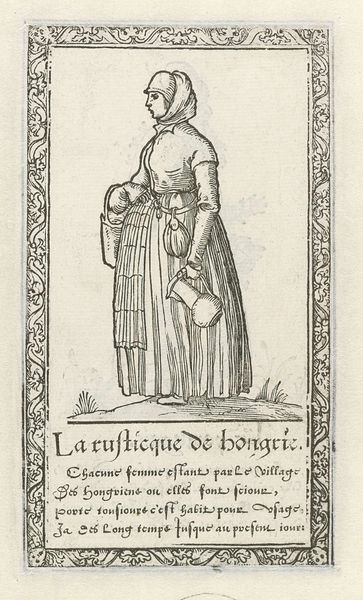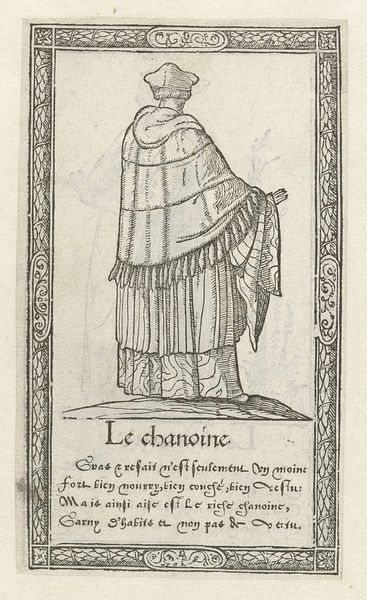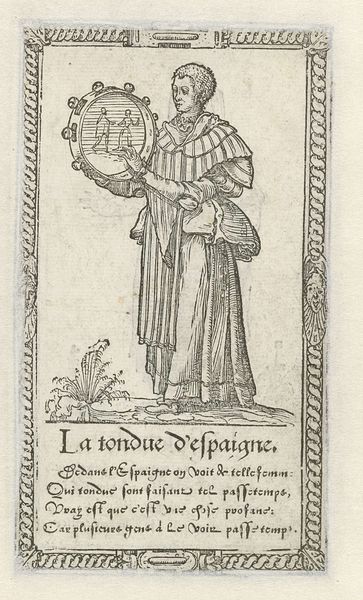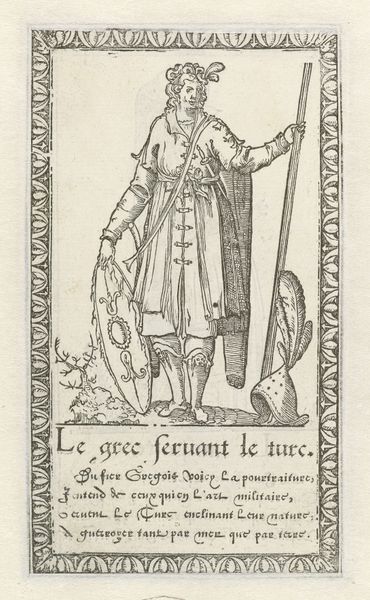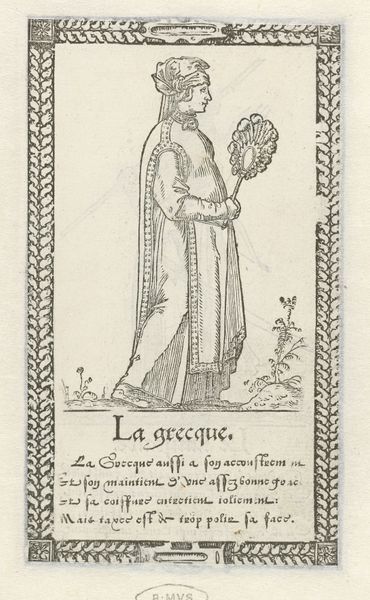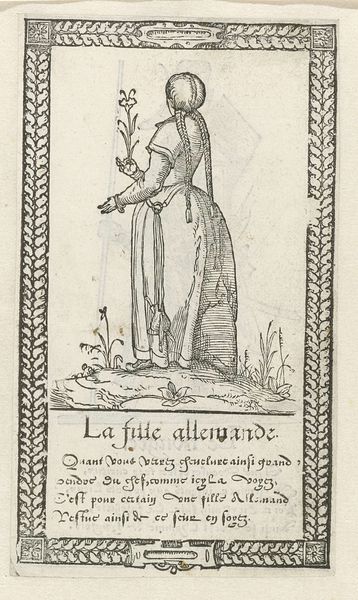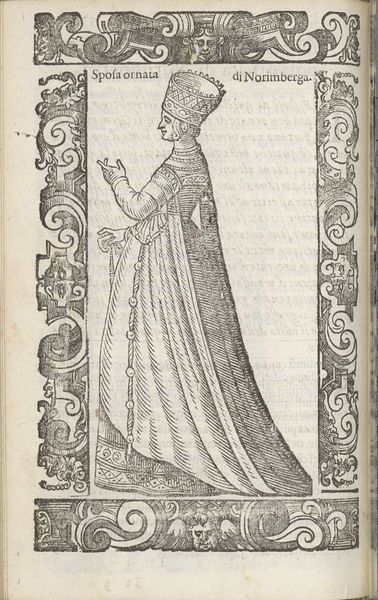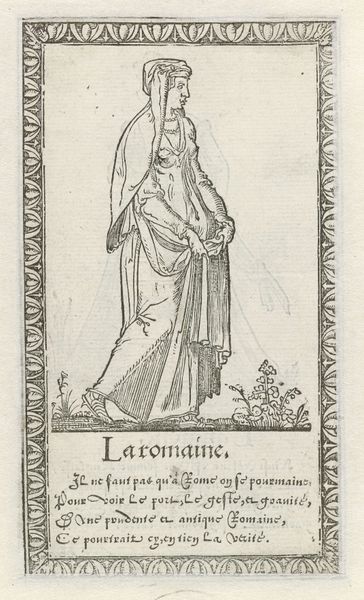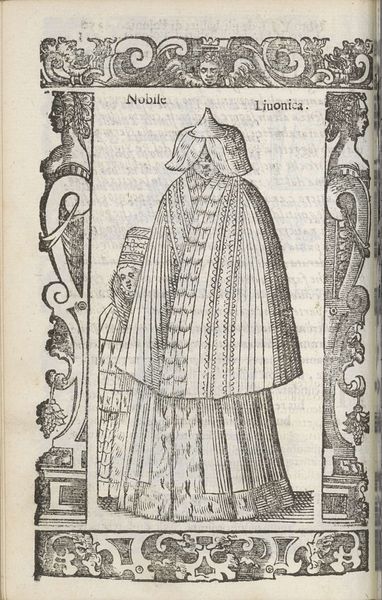
drawing, print, engraving
#
portrait
#
drawing
#
medieval
# print
#
old engraving style
#
figuration
#
northern-renaissance
#
dress
#
engraving
Dimensions: height 146 mm, width 86 mm
Copyright: Rijks Museum: Open Domain
Curator: This print, attributed to François Desprez, is titled "Vrouw uit Portugal," or "Woman from Portugal," dating from 1562. It is an engraving rendered in that recognizable old engraving style. My first impression is a certain starkness. Editor: It feels almost like a stage play costumed character. I see the lines defining her form, and I wonder what narrative, what understanding of "Portuguese woman," the artist intended. It’s fascinating. Curator: It really speaks to the Renaissance interest in depicting different cultures and “types.” But rather than accuracy, I think these prints offered a glimpse, and a performance of identity. The text below the image seems to emphasize this woman's supposed avarice, so money, not the geographical is highlighted. Editor: The visual language here carries so much historical baggage. The attire itself, while detailed, serves as a signifier of the “other.” It reduces her to a symbol, and the details of her clothing and the almost mask-like quality of the head covering reinforce this. Curator: Precisely! The dress then performs the meaning. Notice the small figures flanking the portrait. Do those reflect some further aspects? Keys? Nakedness? The symbolism runs rampant. Editor: Absolutely, keys for entering cities, secrets, perhaps also linked to wealth and its accumulation. While nakedness evokes notions of vulnerability or honesty; its inclusion near her seems somewhat paradoxical and accusatory. The visual rhetoric is rather intense. Curator: Indeed. And given the role engravings like this played in circulating images and ideas, it begs the question of how such depictions influenced perceptions of people. Editor: We must then analyze not just what is depicted but how it operates within a larger framework. What systems of knowledge and power are at work? How do those impact the representation and treatment of people over time? Curator: Exactly, that exploration of representation echoes even today as we grapple with imagery. The historical context provides vital perspectives in those dialogues. Editor: Right. The image can become a launchpad. We gain a more profound knowledge about not only the subject but also our relationship to them and the wider, intricate system.
Comments
No comments
Be the first to comment and join the conversation on the ultimate creative platform.
